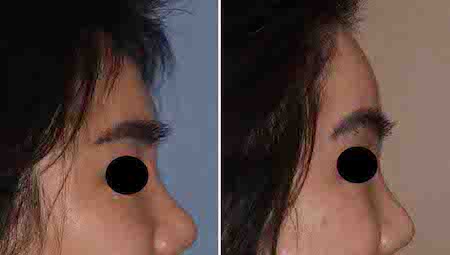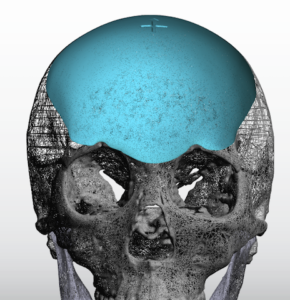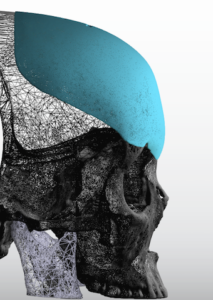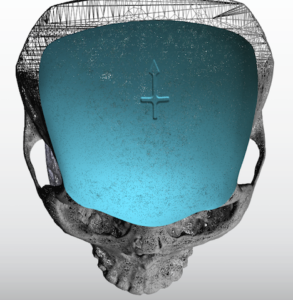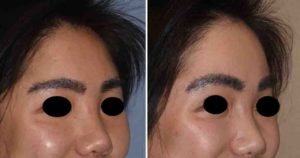The forehead shape is very gender specific as are many facial features. These differences are well known. Men have a more complex topography to their forehead because of the prominent brow ridge that runs horizontally across it. The female forehead is smoother and flatter and lacks any prominent brow bone. The inclination of the male forehead is more backwards while the female is more vertical in profile. The male forehead typically has more prominent temporal lines coming up from the tap of the brow bone up into the forehead which crates a slightly more flat or square shape frontal. Women lack these temporal lines with a resultant more convex shape to their forehead.
Understanding these forehead gender differences are of great value when designing custom forehead implants. In designing the female custom forehead implant they are several considerations including; 1) should the brow bone area be included or not, 2) should the tail of the brow bone be excluded, 3) does the design cross the temporal lines or not, 4) how far back behind he hairline should the implant extend, 5) what and where is the thickness of the central forehead in profile, and 6) what should the shape of the forehead be from side to side.
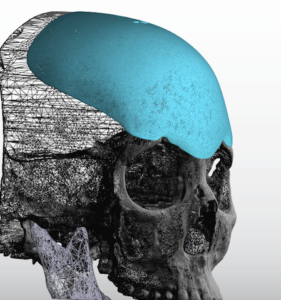
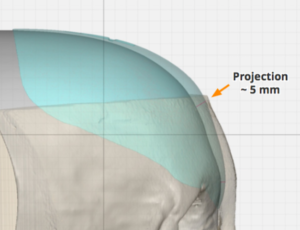
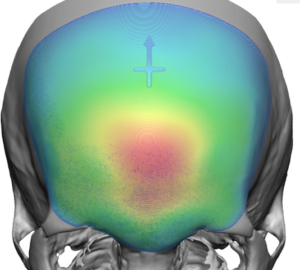
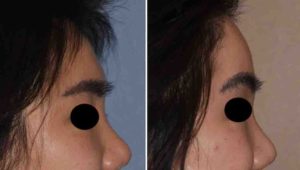
Dr. Barry Eppley
Indianapolis, Indiana

